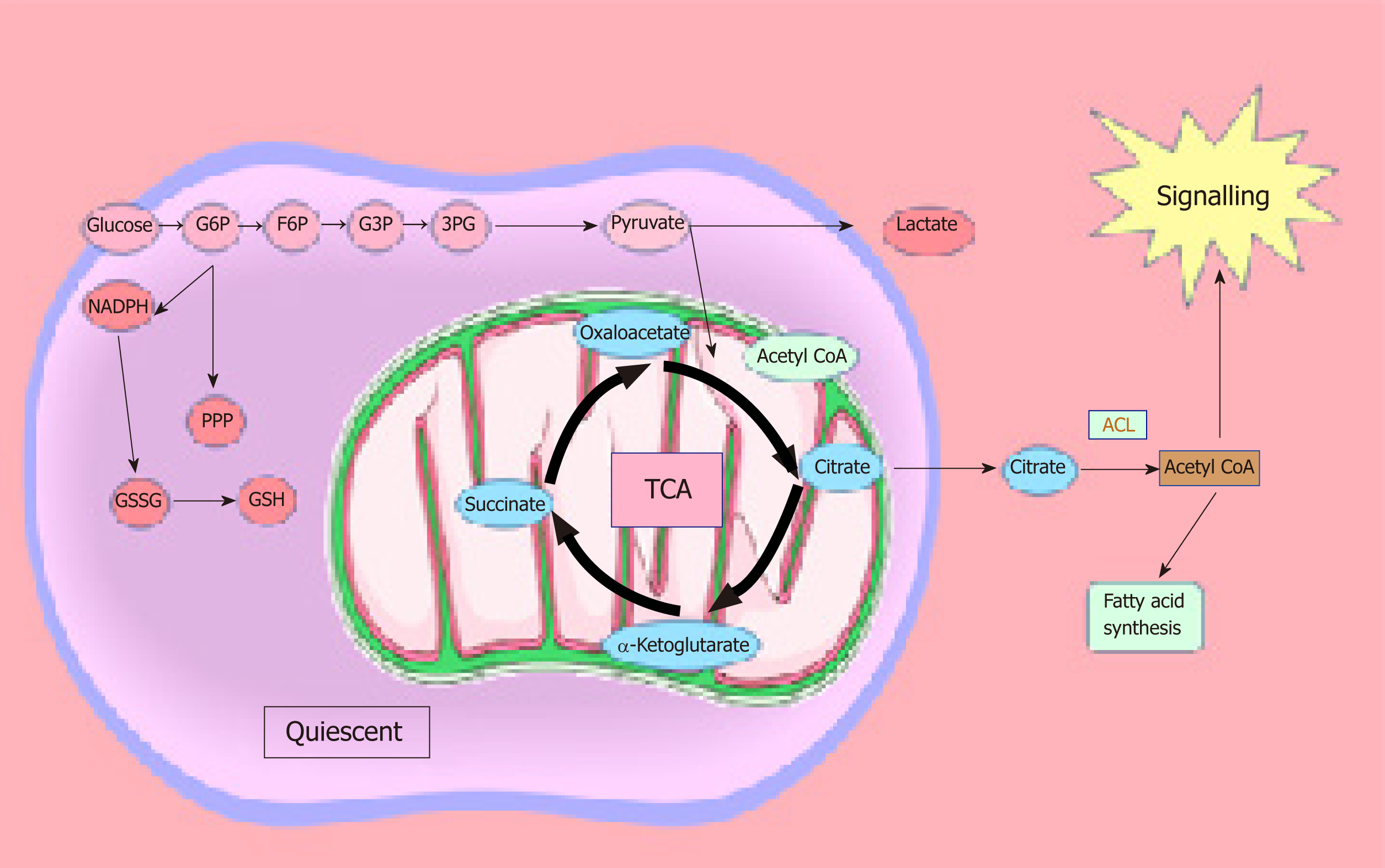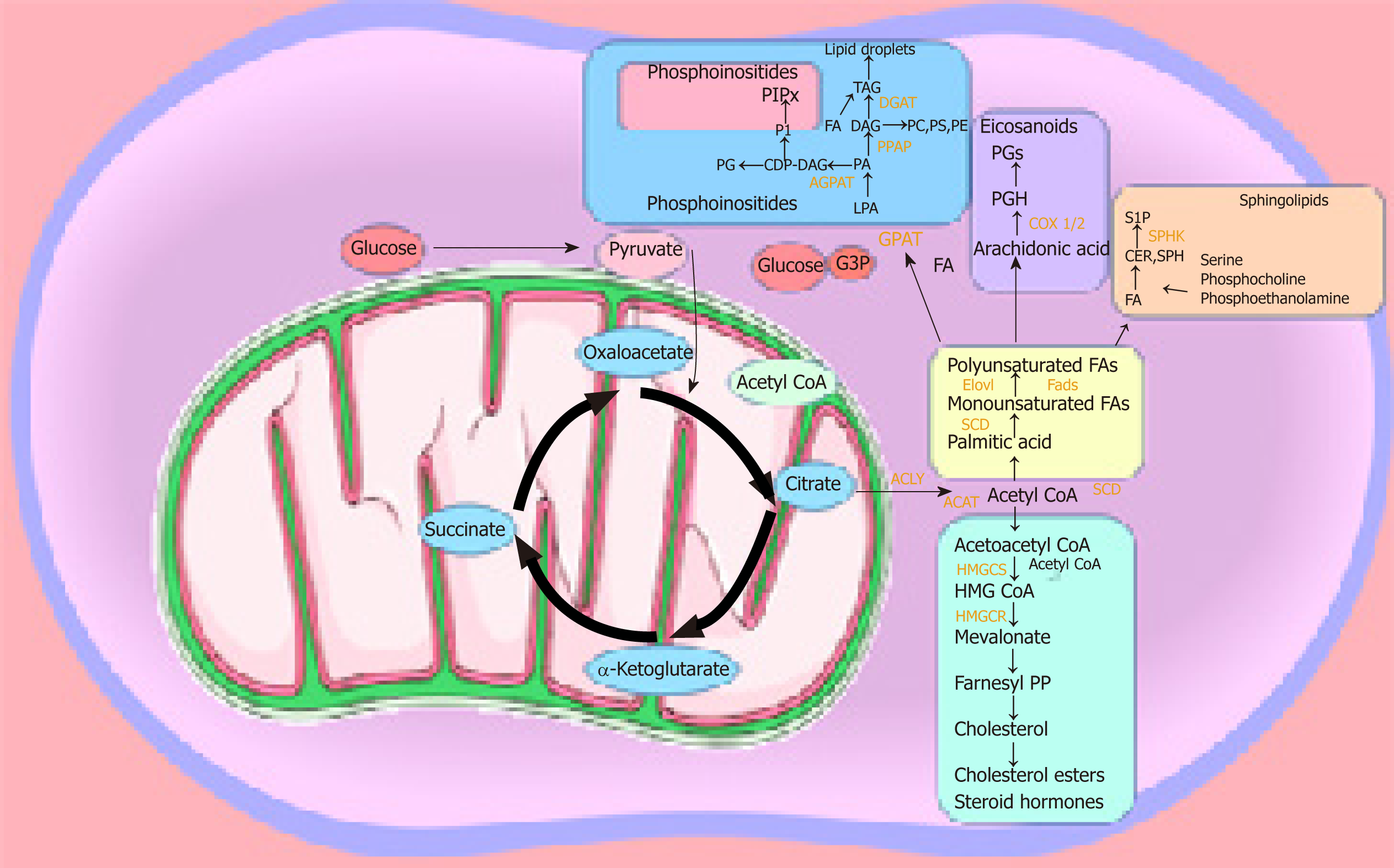Copyright
©The Author(s) 2019.
World J Stem Cells. Sep 26, 2019; 11(9): 693-704
Published online Sep 26, 2019. doi: 10.4252/wjsc.v11.i9.693
Published online Sep 26, 2019. doi: 10.4252/wjsc.v11.i9.693
Figure 1 Cancer cells use glucose-derived metabolites for biosynthesis to support uncontrolled cell proliferation.
Intermediates such as glucose-6-phosphate enter the pentose phosphate pathway and pyruvate is converted to lactate. Cancer stem cells are quiescent by contrast and use glucose-derived pyruvate for mitochondrial metabolism. The reason behind this metabolic shift is unclear. We propose that it is used for the synthesis of bioactive signalling molecules. TCA: Tricarboxylic acid cycle.
Figure 2 Citrate produced through mitochondrial metabolism can enter the fatty acid synthesis pathway.
For example, citrate can enter the mevalonate pathway to produce steroid hormones and cholesterol esters, or it can go on to produce phosphoinositides and lysophospholipids. Both of these are powerful examples of signalling molecules. Therefore, the reason behind the enhanced metabolic activity, which was recently observed in cancer stem cells, must be understood.
- Citation: Begicevic RR, Arfuso F, Falasca M. Bioactive lipids in cancer stem cells. World J Stem Cells 2019; 11(9): 693-704
- URL: https://www.wjgnet.com/1948-0210/full/v11/i9/693.htm
- DOI: https://dx.doi.org/10.4252/wjsc.v11.i9.693










